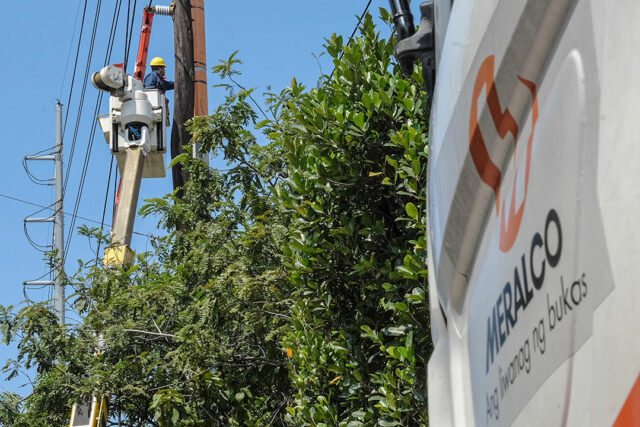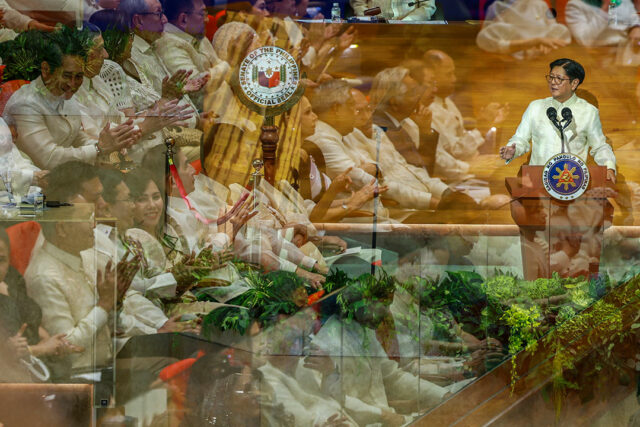We can assess and describe President Ferdinand “Bongbong” Marcos, Jr.s’ 2025 State of the Nation Address (SONA) a hundred ways, but two stand out.
Richard Thaler and Cass Sunstein’s nudging did not seem to work on the President and those who helped him craft the SONA. Despite the elephants in the room, the SONA ignored online gambling and the tariff issues.
There was no better time than the SONA for the President to have defined his Administration’s position on legislation seeking to ban or to regulate e-gambling. Such an omission could betray a lack of heart over the snowballing impact on families with members grappling with a gambling addiction, and those whose finances were simply wiped out by gambling debts. True, even Singapore has succumbed to gambling, which includes card games, roulette, and slot machines, and the city state is now the third biggest market in the casino industry. While gambling there is tightly regulated through strict laws to ensure law and order, the adverse social implications cannot be dismissed. This is one instance that we would rather not be cited as among the top in the world — just an emerging market. Yet we already have colossal issues with gambling losses.
Economists may argue that the market will always find ways to gamble, especially online, so banning the activity does not make much sense as it will never work. On the other hand, regulation sets the rules of the game, and we know parameters tend to limit excessive behavior. What is more, the government can even make money from taxes and other fees.
So, Malacañang could have weighed in — whether it intends to propose banning or regulating — by stressing on the government’s serious pursuit of economic growth. We can always identify other business activities that promise greater productivity and returns to Filipino families with little or no social cost as a game of chance. Moving away from the gambling industry should be consistent with the President’s much applauded announcement in the 2024 SONA that POGOs were to be banned by the end of last year.
This year’s SONA could have also allowed the President to explain why the Philippines was slapped with a relatively high reciprocal tariff by US President Donald Trump when, one, its trade surplus with the US has been relatively modest; two, it is not a transshipment point for China’s exports; and, three, we are the strongest US ally in this side of the Pacific. Yes, nothing is definite yet on the net two-percentage loss from the US’ reciprocal tariff on Philippine exports — from 17% to 20% to 19%. Yes, tariff burden or tariff severity could always be mitigated by the kind of US imports from the Philippines because the US grants certain exemptions like technology-related products. But Malacañang, even at this point, could have turned the table and assured civil society that all efforts are in full swing to pin down better specific terms.
The challenge for the Philippines is to shape up and reach a higher level of global competitiveness. There is some scope for making up for the higher price of Philippine exports in the US market. The President could have also sounded the call to attract those multinational companies relocating from China and other higher-tariff countries. The caveat is the sustained support of government in terms of better infrastructure, stronger connectivity, ease of doing business, cheaper and more reliable energy. After all, this was what the President for the most part of his SONA amplified with feeling.
Without a counterweight and public support, the higher tariff could reduce the country’s economic growth. Nomura announced its forecast of a possible impact of up to 0.4 percentage point. In contrast, Indonesia, which faces the same 19% reciprocal tariff, is expected to weather this shock with only a 0.2 percentage point decline. Domestic growth prospects may be dimmer than expected.
Beyond these two key issues, it was only right for the President to have spent more time on accountability. This was also the focus of the other SONA presented to the Filipino people by the parliament of the streets.
According to the 2025 SONA, accountability should be established on the funding and execution of flood control projects. An ironic picture in one of the broadsheets shows a citizen of this Republic sitting on a table in his flooded house and listening to the President delivering his critique against the flood control programs of his own government. The President could not have been more accurate when he described our flood control projects as “sub-standard or mere figments of imagination.”
The President inspired a standing ovation for challenging the guilty parties with “Let us not pretend. The people know that there are rackets in the projects. Mahiya naman kayo! (Shame on you.)”
Then Marcos challenged the guilty parties to be shamed by the sight of houses submerged in deep floods because those projects did not yield the desired result of flood control, by the liabilities of future generations in terms of repaying the debt incurred to fund sub-standard flood control projects, because a large part of their budgets was kept by the politicians themselves.
We hope this is not just lip service, but the order to submit a list of flood control projects from every region to be examined by regional monitoring groups should have been done many presidencies ago, and, in Marcos’ case, the moment he was sworn in as head of state. Publishing the list is actually superfluous because this should be part of transparency and accountability in public spending. An ordinary Filipino would have no means, background, or even competency to pass judgment on these projects. An independent Commission on Audit should be doing this.
We can only be awed by the sheer magnitude of corruption here.
Senator Ping Lacson estimated that of the P2 trillion allocated for flood control since 2011, almost half may have been lost to irregularities. That is roughly P66 billion a year, or P183 million a day in kickbacks. As far as he is concerned, it is absurd that the rise in floodwaters “is directly proportional to the increase in the annual budget for the National Government’s flood control management program.”
Question: Will the guilty parties be charged and jailed, be made accountable beyond the Blue Ribbon Committee if the report does not garner sufficient support from the senators? Or in the house, beyond the appropriate committee?
It will be good to see how the President will start vetoing those components of the 2026 budget that deviate from the government’s national expenditure program, or those unprogrammed allocations for which loans are to be incurred for funding. Will both houses of Congress agree to open up the bicameral conference to the public when the budget is reconciled and finalized?
The war on corruption — thank God it’s no longer on drugs — is expected to extend to other infrastructure projects. “We will not allow corruption, design flaws, poor quality materials, delays or neglect in maintenance and repair.”
While he also talked about food security, the President could have also warned concerned public agencies on agriculture and food for their failure to stabilize food supply and logistics. By this time the President should have already admitted that bringing rice prices down to P20 a kilo is impossible without structural reforms. Subsidizing the Kadiwa centers to the tune of more than P100 billion a year is absolutely not sustainable. It can only be financed by borrowed funds, or higher taxes.
Finally, the President could have also touched on fiscal sustainability.
Bordering on idealist allocation, the President assured the Filipino public of various public interventions in all spheres of civic life. For business, there shall be capital grants to small business, free training on entrepreneurship, and industrial revitalization. For agriculture, 15 million hybrid and high-quality coconut seeds shall be planted, and more lands shall be distributed to the farmers. For energy, 200 power plants shall be completed in the last three years of his presidency and 1 million households shall be provided with access to electricity.
For education, more school counselors shall be employed, 300 barangay child development centers shall be built, vaccination shall be completed among schoolchildren, more classrooms shall be constructed, scholarships shall be offered. For poverty alleviation, the conditional cash transfer shall be sustained, and the feeding program shall be extended to 750,000 households.
For public health, the President assured those with heart conditions need not worry anymore: treatment for heart ailments, open heart surgery, and heart valve repair or replacement shall be covered by PhilHealth. The treatment for cancer shall be enhanced, dialysis treatment three days a week shall also be covered, and the limit on the kidney transplant subsidy was already increased. Most importantly, the President informed all of us during the SONA, access to public funds would be open to those sick of dengue, those with eyesight issues, and those PWD in need of therapy and rehabilitation. And a hundred more items will be covered by PhilHealth.
We wonder whether our economic managers briefed the President on the emerging fiscal picture. As of June 2025, National Government (NG) debt has reached P17.267 trillion from the level a year ago of P15.484 billion. When the GDP for the first half of 2025 is announced, the ratio could exceed 62%.
It might be difficult for the President to deliver on all these promises considering that the revenue to GDP ratio has been historically low at around 15% while public expenditure to GDP ratio has been higher at about 22%. Those promises — business activities, agriculture, power, education — mean higher spending. Unless supported by higher taxes, this government will have to incur more borrowings.
Fiscal consolidation in the context of SONA cannot be achieved by lower spending. Lower spending will spell failure to translate the President’s vision and commitment to something beyond “palamuti” (decoration). There is no other option but to maximize each peso of public revenue and this means promoting good governance and eliminating corruption in public office.
Let us take up the President on his assurance that “sa mga matitinding hamon na binabato at hinaharang ng ating mundo ngayon, nasa likod ninyo ang pamahalaan.” (In the face of the severe challenges our world is facing today, the government is behind you.)
Diwa C. Guinigundo is the former deputy governor for the Monetary and Economics Sector, the Bangko Sentral ng Pilipinas (BSP). He served the BSP for 41 years. In 2001-2003, he was alternate executive director at the International Monetary Fund in Washington, DC. He is the senior pastor of the Fullness of Christ International Ministries in Mandaluyong.













